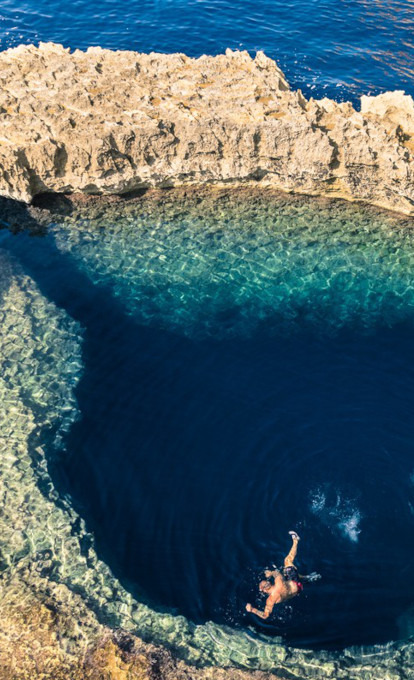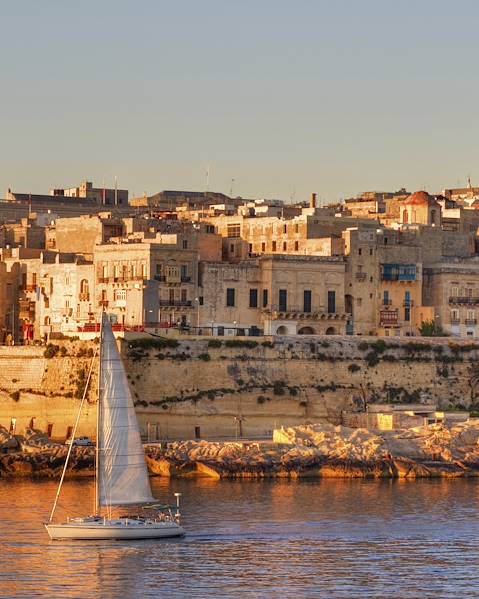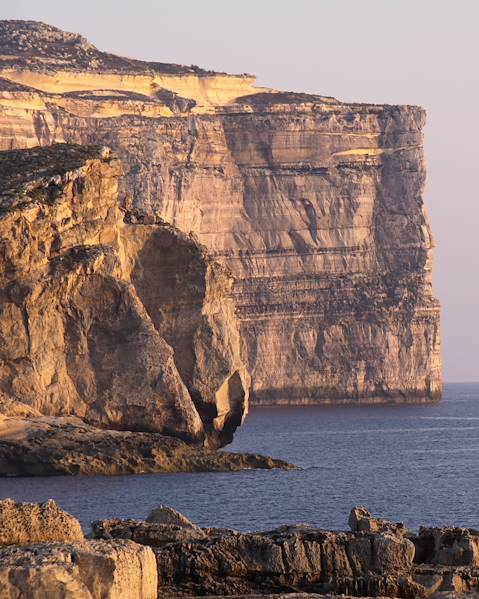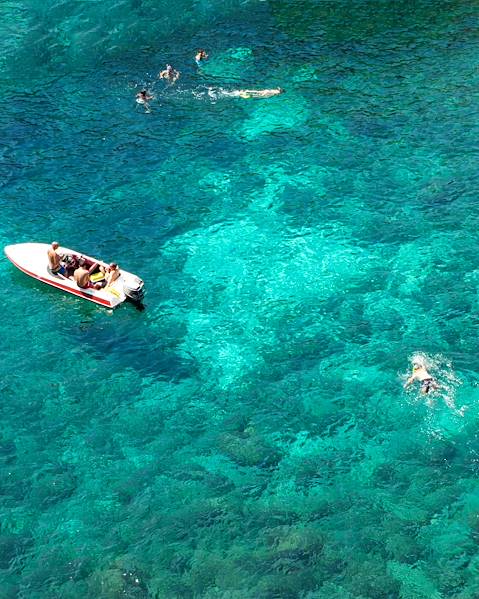Population
518,536 inhabitants (2021).
Official language
Maltese and English.
Language spoken
The official languages of Malta are Maltese and English, with 95.4% of the inhabitants speaking the Maltese mother tongue. Maltese is a language of Semitic origin written in the Latin script and over the centuries it has incorporated many words that originally derived from English, Italian and French. Italian is also widely spoken, as is English, but the Maltese islanders have managed to retain a unique language, despite countless others being brought over throughout the years. Maltese was largely only a spoken language until the latter half of the 19th century, when its grammatical rules were defined and written down.
People
Descendants of colonists from Sicily and Calabria formed the basis for the repopulation of the Maltese islands in the beginning of the second millennium, which when coupled with the eastern Mediterranean and the Maghreb influence, have formed the contributing genetic makeup of the Maltese people. Language is also the foundation of identity here and one of the largest foreign communities remains the British.
Religion
Roman Catholicism is the state religion of Malta, with 98% of the Maltese people identifying as Catholic (mostly Roman-rite, with a Byzantine-rite minority), making the nation one of the most Catholic countries in the world.
National Holiday
September 21 (independence anniversary - 1964).
Holiday Calendar
January 1: New Year's Day.
February 10: Feast of the Shipwreck of Saint Paul.
March 19: Feast of Saint Joseph.
March 31: Freedom Day (1979: departure of the last British soldiers).
March-April: Holy Week.
May 1: Labor Day.
June 7: Anniversary of the Insurrection of June 7, 1919 (against the British).
June 29: Feast of Saint Peter and Saint Paul.
August 15: Feast of the Assumption.
September 8: Victory Day (of the Knights of Saint John of Jerusalem over the Ottomans – 1565).
September 21: National Day.
December 8: Feast of the Immaculate Conception.
December 13: Republic Day (1974).
December 25: Christmas Day.
History
Malta is an archipelago found in Southern Europe, nestled between Italy and Libya in the Mediterranean Sea. It’s influenced by its neighbouring countries, with Sicily, Tunisia and North Libya all nearby. Inhabitants have been settled here since as early as 5900 BC, with its central Mediterranean Sea location proving hugely important, acting as a naval base. Countless powers have grappled with ruling the island, including the Phoenicians and Carthaginians, Romans, Greeks, Arabs, Normans, Aragonese, Knights of St. John, French and British (to name a few!).
Malta is the world’s tenth smallest country in area, with just 518,536 inhabitants covering an area of around 122 square miles. Its capital Valletta is the smallest national capital in the European Union by area and population. It may be small but it’s certainly mighty and became a British colony in 1813, serving as a station for ships and the headquarters for the British Mediterranean Fleet. Before being besieged during World War II by the Axis power, where an important allied base for operations in the Mediterranean and North Africa was formed. In 1964 the British parliament passed the Malta Independence Act, giving the Maltese people independence from the United Kingdom as the State of Malta, with the late Elizabeth II as its queen. The country then became a republic in 1974 and has been a member state of the Commonwealth of Nations and the United Nations since its independence. It also joined the European Union in 2004 and then became part of the Eurozone monetary union in 2008.
Malta has celebrated Christians since the time of early Christianity, although while under Arab rule the country became a predominantly Muslim country, at the time however Christians were tolerated. The Norman invasion of Malta by Roger I in 1091 brought with it the end of the Muslim rule, and now Catholicism is the state religion, but the Constitution of Malta guarantees freedom of conscience and religious worship.
The Maltese economy is heavily reliant on tourism and the country continually promotes itself as a must-see Mediterranean tourist destination, and rightly so, with a much warmer climate than the rest of Europe and countless landmarks, UNESCO World Heritage Sites (including Hal Saflieni Hypogeum, Valletta and seven megalithic temples, which are some of the oldest free-standing structures in the world) and of course, plenty of beaches for lounging - you really can’t go wrong.
Politics
The republic of Malta has a parliamentary system and public administration that’s been closely modelled on the Westminster system in the UK. It has the second-highest voter turnout in the world (and highest for nations without mandatory voting). The unicameral Parliament is made up of the President of Malta and the House of Representatives, with the President of Malta being a largely ceremonial position. They are appointed for a five-year term by a resolution of the House of Representatives carried by a simple majority. This House of Representatives has 65 members that’re elected for a five-year term in 13 five-seat electoral divisions and since Malta is a republic, the head of state in Malta is the President of the Republic.
Etiquette
Tipping in Malta is at your discretion and while it isn’t mandatory, it’s something that’s expected if you’re happy with the service you receive. For guides, we recommend four to five euros per day and per person. For service personnel it can vary greatly, a good way to align your trip with the local economy is by gaging the prices of a beer or tea, which will give you an idea of the standard of living and allow you to estimate a reasonable amount. In Malta a tip of around 10 to 15% is the standard for waiters or taxi drivers. When it comes to clothing, the Maltese people tend to dress formally and modestly, which is something to bear in mind. Hats should be removed when entering a church, with shoulders covered and appropriate footwear (sandals and open-toe shoes should be avoided in sacred buildings and sites). The Maltese typically have a relaxed approach towards timekeeping and punctuality, which is commonly referred to as ‘island time’. This friendly and laid-back approach is a welcoming one to tourists, with the island’s celebrations and festivities something for all to enjoy.
Shopping
The Luzzu, a traditional colourful fishing boat boasting two eyes on the bow, is one of the most popular Maltese souvenirs. Followed by the famous dolphin shaped door knockers, Maltese cross and other religious porcelain or enamel figurines. The goldsmiths of the archipelago are also known for their exquisite filigrees and further afield in Gozo it’s all things lace (silk, cotton or crochet) and blown glass. Of course, there’s things to quell stomach rumblings too, with honey, nougat, sheep cheeses, olive oils and liqueurs in a plentiful supply.
Food
Talking of food, the cuisine in Malta is a pretty big deal. It’s flavourful, fresh and influenced by neighbouring countries, like Italy with its fish supply and the Arabs with their breads and wine. There’re plenty of authentic Maltese dishes to enjoy, from the national dish of fenkata (braised rabbit served with potatoes and nougat, and peanuts as a side dish) to the aljotta, a fish soup. Or try the warming Kawlata, a traditional Maltese vegetable soup that’s typically made with cabbage and pork. There’s also a distinct North African influence, incorporating broad beans cooked with garlic and parsley while the surrounding sea provides mahi-mahi, that’s often cooked in a spicy tomato sauce. Or the famous octopus stew and tuna rolls. But those on the go in need of a quick fix needn’t worry, as there’s plenty of pastizzi to be found (a fondant filled with ricotta or peas). Gozo has plenty of options too, with sheep cheese dishes and ftira ghawdxija stuffed bread filled with potatoes, tomatoes, olives, anchovies.
Drink
The tap water is drinkable but, to avoid any hassle, we advise you to drink bottled mineral water. Of course, you can always wet the whistle with Kinnie, the Maltese David-Cola attempting (and succeeding) in taking on the American Coca-Goliath. Or opt for one of the local beers, Cisk and Hopleaf. There was a time when the British wanted to replace the Malta growing vines with cotton and wine with beer but the cotton growing collapsed, while the beer remained and wine vine growing returned. Today the most typical grapes of the archipelago are the ghirgentina, which make delicious white wines. While the gellewza make excellent reds and rosés and the old-fashioned vinification gives supple, low-concentration wines. Coffee is enjoyed relatively plain here, although the addition of cinnamon and orange blossom is always a welcome one.
















